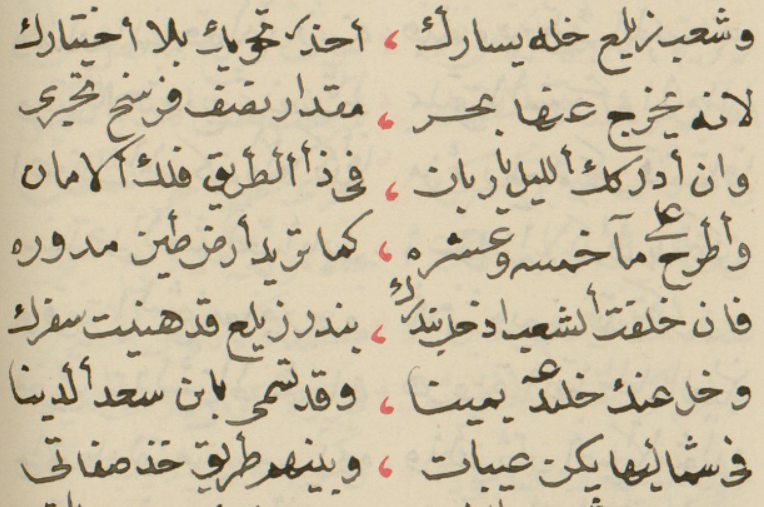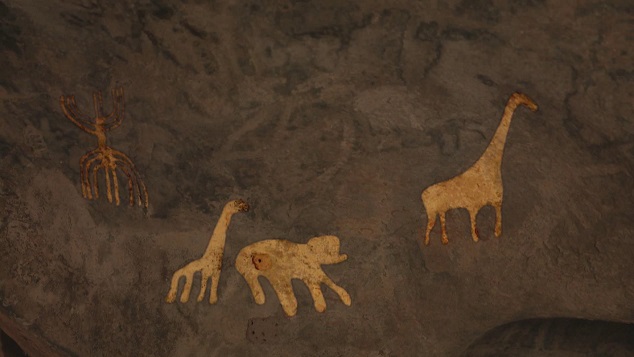|
Awdal
Awdal (, ) is an administrative region (''Administrative divisions of Somaliland, gobol'') in western Somaliland. It was separated from Woqooyi Galbeed and became a province in 1984 and is the most northwesterly province of Somaliland. To the east it borders Maroodi Jeex and Sahil, Somaliland, Sahil; to its north-west it borders Djibouti; to its south and south-west lies Ethiopia; and the Gulf of Aden to its north. The province has an estimated population of 1,010,566. The region comprises the four districts of Borama, the regional capital, Baki District, Baki, Lughaya District, Lughaya, and Zeila District, Zeila. Description Awdal (أودل) takes its name from the medieval Adal Sultanate (عَدَل), which was originally centered on Zeila. The area along the Ethiopian border is abundant with ruined cities, which were described by the British explorer Richard F. Burton. Geologically, much of the Awdal region is located in the Arabian Plate. Demographics The Awdal Region ... [...More Info...] [...Related Items...] OR: [Wikipedia] [Google] [Baidu] |
Gadabuursi
The Gadabuursi (Somali language, Somali: ''Gadabuursi'', Arabic language, Arabic: جادابورسي), also known as ''Samaroon'' (Arabic language, Arabic: ''قبيلة سَمَرُون)'', is a northern Somali clan, a sub-division of the Dir (clan), Dir clan family.I. M. Lewis (1959) The Gadabuursi are geographically spread out across three countries: Ethiopia, Somaliland and Djibouti. Among all of the Gadabuursi inhabited regions of the Horn of Africa, Ethiopia is the country where the majority of the clan reside. In Ethiopia, the Gadabuursi are mainly found in the Somali Region, but they also inhabit the Harar, Dire Dawa and Oromia Region, Oromia regions. In Somaliland, the Gadabuursi are the predominant clan of the Awdal Region.UN (1999) Somaliland: Update to SML26165.E of 14 February 1997 on the situation in Zeila, including who is controlling it, whether there is fighting in the area, and whether refugees are returning. "Gadabuursi clan dominates Awdal region. As a res ... [...More Info...] [...Related Items...] OR: [Wikipedia] [Google] [Baidu] |
Borama
Borama (, ) is the largest city of the northwestern Awdal region of Somaliland. The commercial seat of the province, it is situated near the border with Ethiopia. During the Middle Ages, Borama was ruled by the Adal Sultanate. It later formed a part of the British Somaliland protectorate in the first half of the 20th century. According to a 2023 estimate the city had a population of 300,000, with the broader district having a population of 398,609 according to a UN 2014 population estimate. making it one of the largest cities inside Somaliland. It has been a leading example in community organizing, having been the first area in Somaliland to adopt a self-help scheme in the wake of the civil war. Etymology The name Borama comes from the word ''booraan'' (pl. ''booraamo''), which is a deep hole or geological depression (e.g. basin, valley). The city was named after the valleys in the surrounding areas, with Borama meaning place of valleys. History As with several nearby town ... [...More Info...] [...Related Items...] OR: [Wikipedia] [Google] [Baidu] |
Zeila
Zeila (, ), also known as Zaila or Zayla, is a historical port town in the western Awdal region of Somaliland. In the Middle Ages, the Jewish traveller Benjamin of Tudela identified Zeila with the Biblical location of Havilah. Most modern scholars identify it with the site of Avalites mentioned in the 1st-century Greco-Roman travelogue the ''Periplus of the Erythraean Sea'' and in Ptolemy, although this is disputed. The town evolved into an early Islamic center with the arrival of Muslims shortly after the Hijrah. By the 9th century, Zeila was the capital of the early Adal (historical_region), Adal Kingdom and Ifat Sultanate in the 13th century, it would attain its height of prosperity a few centuries later in the 16th century. The city subsequently came under Ottoman Empire, Ottoman and British Empire, British protection in the 18th century. Up until recently Zeila was surrounded by a large wall with five gates: Bab al Sahil and Bab al-jadd on the North. Bab Abdulqadir on the Ea ... [...More Info...] [...Related Items...] OR: [Wikipedia] [Google] [Baidu] |
Baki District
Baki District () is a district in the Awdal region of western Somaliland. Demographics Baki is inhabited by the Reer Nuur branch of the Makahiil and Reer Mohamed branch of the Mahad 'Ase subclans of the Gadabuursi Dir clan. Mayor *Idiris Faarax Rooble 2002 *Saleebaan Maxamuud Aadan 2016 Mining The Simodi Mountains, located 48 km east of Baki village, have long been used as a mine. In the past, coltan and other materials were mined, and nowadays beryllium is mined and is called the Simodi Beryllium Mining Site. Mining rights are complex. The Somaliland government has granted mining rights to China's African Resources Corporation (ARC.) However, local clans have complained that profits are not being returned to the local community. Somaliland government effectively controls Baki district, so the Federal Republic of Somalia has no real authority over it at all. However, there had been discussions between the Minister of Foreign Affairs of the Federal Republic of Somalia a ... [...More Info...] [...Related Items...] OR: [Wikipedia] [Google] [Baidu] |
Lughaya District
Lughaya District () is a district of the Awdal region in Somaliland. As of 2005, the Lughaya District had an estimated population of 36,104 residents. As of 2007, Lughaya District's administrative division in Somaliland is C. (A being the highest and D being the lowest.) Although it is an old port town, no large port is suitable for overseas trade. Demographics The broader Lughaya District has a total population of 100,104 residents. The district is mainly inhabited by the Mahad 'Ase subclan of the Gadabuursi Dir clan who make up the predominant clan of the district, dominating local government representation and having always occupied the seat of the mayor. Malte Sommerlatte (2000) states: "In the centre of the study area are the Gadabursi, who extend from the coastal plains around Lughaye, through the Baki and Borama districts into the Ethiopian highlands west of Jijiga." In the Ruin and Renewal: The story of Somaliland (2004), the author states: "So too is the boundary ... [...More Info...] [...Related Items...] OR: [Wikipedia] [Google] [Baidu] |
Governor Of Awdal
The Governor of Awdal is the chief executive of the Somaliland region of Awdal, leading the region's executive branch. Governors of the regions is appointed to the office by the Somaliland president. The current governor of Awdal is Hassan Dahir Haddi. Maxamed cabdilahi cawale (Qoslaaye) 02.march.1993 to 1996 List of governors See also *Awdal *Politics of Somaliland The politics of Somaliland take place within a hybrid system of governance, which, under the Somaliland constitution, combines traditional and western institutions. The constitution separates government into an executive branch, a legislative br ... References External links Governors of Awdal {{Somaliland-gov-off-stub ... [...More Info...] [...Related Items...] OR: [Wikipedia] [Google] [Baidu] |
Asha-Addo
Asha Addo () is a village located in the Zeila district of the Awdal Region, in Somaliland. The village lies on both sides of a wadi (a mostly dry riverbed) in the Guban, a desert-like coastal steppe. It has a mosque and 2 telecom masts. The main road from Djibouti to Somaliland's capital Hargeisa passes through Asha Addo; it is no more than a sandy track in these parts. Demographics As of 2012, the population of Asha Addo has been estimated to be 421. The inhabitants belong to the Somali ethnic group, with the Gadabuursi and Issa clan sharing the town. See also *Administrative divisions of Somaliland *Regions of Somaliland *Districts of Somaliland The Districts of Somaliland (also known as local government districts) are second-level administrative subdivisions of Somaliland, below the level of Regions of Somaliland, region. There are a total of 22 district, each district is rated A, B ... References Populated places in Awdal {{Somaliland-geo-stub ... [...More Info...] [...Related Items...] OR: [Wikipedia] [Google] [Baidu] |
Mohammed Ahmed Alin
Mohammed Ahmed Alin Yusuf (), also known as Tiimbaro, is a Somaliland politician who is currently serving as the Governor of Maroodi Jeex region since 25 June 2023. He also served as the Governor of Awdal region of Somaliland between 29 June 2020 and 25 June 2023. Tiimbaro also served as the Governor of Sanaag region of Somaliland Somaliland, officially the Republic of Somaliland, is an List of states with limited recognition, unrecognised country in the Horn of Africa. It is located in the southern coast of the Gulf of Aden and bordered by Djibouti to the northwest, E ... from January 2018 to June 2020. See also * Maroodi Jeex Region References Living people Governors of Awdal Governors of Sanaag Year of birth missing (living people) 21st-century Somaliland politicians {{somaliland-politician-stub ... [...More Info...] [...Related Items...] OR: [Wikipedia] [Google] [Baidu] |
Somaliland
Somaliland, officially the Republic of Somaliland, is an List of states with limited recognition, unrecognised country in the Horn of Africa. It is located in the southern coast of the Gulf of Aden and bordered by Djibouti to the northwest, Ethiopia to the south and west, and Somalia to the east. Its claimed territory has an area of , with approximately 6.2 million people as of 2024. The capital and largest city is Hargeisa. Various Somali Muslim kingdoms were established in the area during the early Islamic period, including in the 14th to 15th centuries the Zeila-based Adal Sultanate. In the early modern period, successor states to the Adal Sultanate emerged, including the Isaaq Sultanate which was established in the middle of the 18th century. In the late 19th century, the United Kingdom signed agreements with various clans in the area, establishing the British Somaliland, Somaliland Protectorate, which was formally granted independence by the United Kingdom as the Sta ... [...More Info...] [...Related Items...] OR: [Wikipedia] [Google] [Baidu] |
Adal Sultanate
The Adal Sultanate, also known as the Adal Empire or Barr Saʿad dīn (alt. spelling ''Adel Sultanate'', ''Adal Sultanate'') (), was a medieval Sunni Muslim empire which was located in the Horn of Africa. It was founded by Sabr ad-Din III on the Harar plateau in Adal after the fall of the Sultanate of Ifat. The kingdom flourished to 1577.. At its height, the polity under Sultan Badlay controlled the territory stretching from Cape Guardafui in Somalia to the port city of Suakin in Sudan. The Adal Empire maintained a robust commercial and political relationship with the Ottoman Empire. Sultanate of Adal was alternatively known as the federation of Zeila. Etymology Adal is believed to be an abbreviation of Havilah. Eidal or Aw Abdal, was the Emir of Harar in the eleventh century which the lowlands outside the city of Harar is named. In the thirteenth century, the Arab writer al-Dimashqi refers to the city of Zeila, by its Somali name "Awdal" (). The modern Awdal region ... [...More Info...] [...Related Items...] OR: [Wikipedia] [Google] [Baidu] |
Abasa, Awdal
Abasa (also spelled: Abbasa, Abbaso) () is an ancient town in the northwestern Awdal region of Somaliland. In ancient times it served as the capital of both Queen Kola's Kingdom and Kingdom of Adal. Overview Abasa is situated around 50 km to the north of Borama, the capital city of the Awdal Region in Somaliland, and about 15 km to the east of Boon, Awdal. Philip Briggs (2012) describes the ruins of Abasa: "Abasa, the most impressive of the ruins around Borama, is accessible by 4x4 only. It's a bone rattling 2-hour drive that entails following the Zeila road northwest, then heading northeast to the village of Bon (or Bown), before taking a rough 15km track to the east." Abasa is situated over 1,000 m above sea level. The old town contained over 200 houses, each built with stone walls and mason ranging from single room to multi-roomed courtyard houses. Niches were cut in the walls for storage, and they were roofed with brushwood laid over wooden rafters. The ... [...More Info...] [...Related Items...] OR: [Wikipedia] [Google] [Baidu] |





